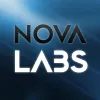Take a look inside 5 images
NOVA Labs
Pros: This is NOVA: superb, well-narrated science videos, now used to support meaningful (and fun!) interactive tasks.
Cons: Teachers will want more tips and pre-made tools for integrating the labs and the classroom, as well as options to accelerate or support students.
Bottom Line: Serious, sophisticated science engagement -- but be prepared to take some prep time to connect these labs with your classroom.
For high school teachers, using a NOVA Lab is almost as easy as plopping it into your existing unit. For 1-to-1 classrooms, have kids focus independently; you can use printed lab reports to check progress and responses. Student accounts save lab progress. If you use a flipped approach, assign a chunk of the lab for completion before class, designating class time for discussion.
Middle school teachers will want to preview the labs to insert relevant classroom tasks -- possibly textbook passages, hands-on activities, or direct instruction. You'll want to keep addressing misconceptions and help highlight key ideas. Have kids work in pairs, possibly with (teacher-created) digital or paper worksheets to organize learning. Consider requiring a teacher check-in before advancing to subsequent sections. Be aware that the site has quick links to Facebook, Twitter, etc.; provide relevant guidance to your kids.
NOVA Labs combines video with interactive tasks and real data sets in creating the Sun, Energy, Cloud, RNA, Cybersecurity, and Evolution labs. Designed for middle and high school students, the labs place content learning within a simulated "research challenge" -- predicting solar storms or designing RNA, for example. Videos are used throughout the labs to share content and tasks; they are also helpfully available from both the site and the lab home pages.
Most labs begin with structured, sometimes game-like activities (e.g., building phylogenetic trees), and progress to more open-ended opportunities (e.g., querying recent weather data). A digital lab report records quiz answers and notes and is saved if the student is logged in (guest access is also available). The site also provides access to relevant professionals (Meet the Experts), related resources and events (Opportunities), and Educators pages.
NOVA Labs furthers the program's reputation for outstanding science content. The labs almost seamlessly merge online tasks (e.g., bonding base pairs, sequencing hurricane events) with learning content. When additional information must be imparted, it's largely through captivating video coordinated to careful narration. Further, the online lab report allows kids to jot down their notes and review quiz responses. Seriously, kids can't help but learn.
Still, teachers may want more classroom-oriented support, like coordinating worksheets, ideas for hands-on activities, sample class discussion threads, and possible answers to open-ended inquiry questions (e.g., What is Typhoon Guchal's shape?). Also, we expect some kids will lack prerequisite knowledge or (somehow) miss the key concepts, while some will grasp it all in the first few clicks. NOVA could do more to suggest specific remediation and extension opportunities.














